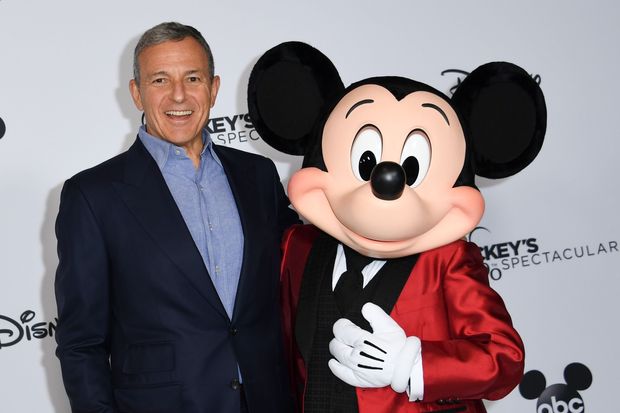Two Important Lessons on How to Manage Uncertainty
To be a CEO in this day and age means to be expert – or adept, at minimum – in managing uncertainty. Considering that as of today the average tenure for a CEO is a mere five years alludes to the uncertainty inherent to the role, now more than ever.
Uncertainty is arguably our greatest challenge in light of COVID-19, which is why there is no better time than now to share two important lessons from an expert on how to effectively manage uncertainty and why it’s important: former CEO and current chairman of the Walt Disney Company, Bob Iger. Bob announced he was stepping down from the CEO position in February after a remarkable 15 years in the top position. Two highlights from Bob’s illustrious and enduring career:
Eisner succession Bob persevered through a grueling, seemingly-never-ending vetting process before assuming the top leadership position after his cantankerous but respected predecessor, Michael Eisner (it was under Eisner’s stewardship that the Company released such box office hits as Beauty and the Beast, The Lion King and The Little Mermaid). Adding to the stress of the process, two board members, one being Roy E. Disney the nephew of founder Walt, announced a lawsuit against the Company for appointing Bob as CEO in what they claimed was a “fraudulent succession process”. The lawsuit was eventually dropped, due in large part to Bob’s ability to exercise emotional discipline and recognize that “if you approach and engage people with respect and empathy, the seemingly impossible can become real”.
Opening Shanghai Disneyland Four days prior to the opening of Shanghai Disneyland, an 18-years-in-the-making endeavor, a domestic terrorist attacked Pulse nightclub in Orlando, FL. The nightclub was located near another Disney property, the Walt Disney World Resort which has 70,000 employees and tens of thousands of daily visitors. Just 48 hours after the terrorist attack, one of the deadliest in U.S. history, a two-year-old child was killed by an alligator on the same Walt Disney World Resort property. In an awe-inspiring display of leadership (keep reading to find out in part how he did it) Bob managed to respond effectively to both crises, while successfully launching one of Disney’s most significant business ventures.

Disneyland Shanghai opened on June 16, 2016 after an 18-year-long development process of which Bob Iger was a central part.
Bob was successful in managing the doubt and anxiety inherent to both situations in a way that allowed his and his company’s continued success. Below are two important lessons taken from his memoir The Ride of a Lifetime: Lessons learned from 15 years as the CEO of the Walt Disney Company, on how to manage uncertainty (whether business, personal, or global-health-crisis related) like a pro:
#1 Focus on what can be achieved; optimism is a stronger motivator than pessimism. In his memoir’s prologue, Bob lists the ten leadership principles that he identifies as having served him best over his 45-year career. The first trait he lists is optimism or as he describes it, “a pragmatic enthusiasm for what can be achieved.” The use of ‘pragmatic’ is key in this definition; optimism as Bob understands and practices it does not mean willfully ignoring the reality of one’s circumstances or ‘living in the now’ and only in the now without a prudent eye looking ahead. After all, foreseeing the foreseeable is one of the essential disciplines of effective crisis response and leadership. However, foreseeing the foreseeable and metaphorically lighting one’s hair on fire over it in the present are not mutually exclusive.
Bob’s brand of optimism means regardless of or despite the circumstances, knowing that there is in fact a solution, a path forward, a way out of / around / through / or over an obstacle. The key is to remain mentally and emotionally flexible in accepting what the ‘solution’ or solutions available are. Put another way, simply because a solution does not align with one’s initial expectations or preferences does not make it any less of a solution.
#2 To recognize and accept what is beyond one’s control is an effective way to restore control. It might surprise you (as it did me) to know that Bob’s answer to the question of ‘what is it about “The Job” that kept him up at night?’ is, “I don’t agonize over the work very much … I tend to approach bad news as a problem that can be worked through and solved, something I have control over rather than something happening to me.”
His quote belies the underlying effective mental approach to managing uncertainty, which is to focus on and prioritize what one does have control over, as opposed to flailing helplessly (and needlessly) in the dark wasteland-of-hypotheticals. Part of what makes uncertainty so challenging is the inherent fear it carries; “what will happen to [ insert person / place / thing of value ] if…” To allow oneself to spend too much time in the dark wasteland-of-hypotheticals is a form of self-inflicted harm because it makes the current problem unnecessarily more difficult. Valuable mental and emotional energy are wasted fixating on problems that might never arrive or if they do, are often not as severe as initially feared.
Acknowledging and accepting what cannot be controlled (like the announcement of a damaging lawsuit, a sudden animal attack, or the emergence of a bewildering disease) is a form of control in and of itself. It brings into relief what can be controlled and what can be done about it. This is not purely an exercise in self-soothing although it can help restore some inner peace; it has the pragmatic effect of revealing and prioritizing what can be done to mitigate the problem. And once it is known what options are available, steps can start to be taken in pursuit of those options in the greater service of reaching a solution. And this kind of progress has the twofold effect of dissipating fear and enhancing morale.
Uncertainty is unavoidable. Panic and despair in reaction to it, are not. Thank you, Bob, for setting an uplifting and admirable example.




Leave a Reply
Want to join the discussion?Feel free to contribute!